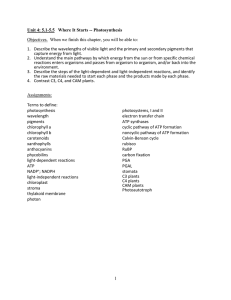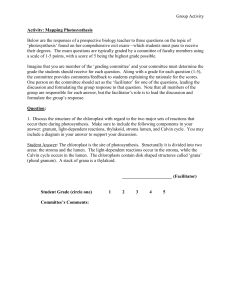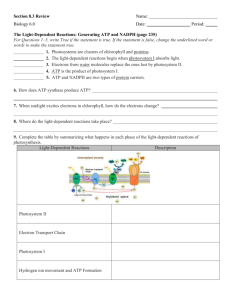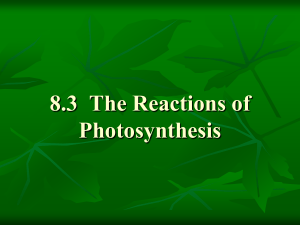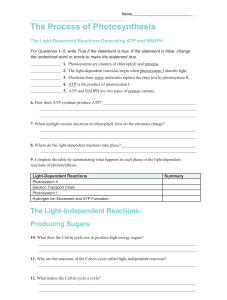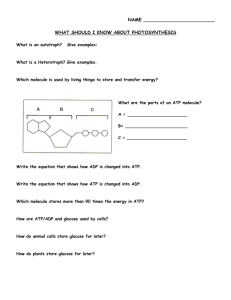8.3 The Process of Photosynthesis Lesson Objectives
advertisement
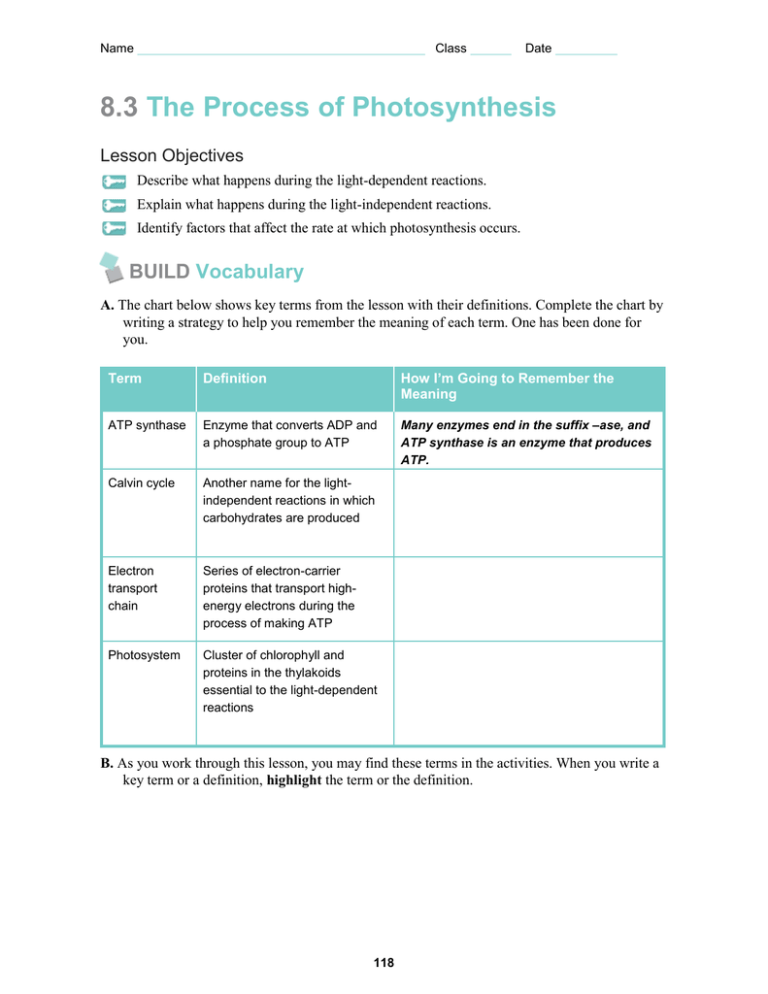
Name Class Date 8.3 The Process of Photosynthesis Lesson Objectives Describe what happens during the light-dependent reactions. Explain what happens during the light-independent reactions. Identify factors that affect the rate at which photosynthesis occurs. BUILD Vocabulary A. The chart below shows key terms from the lesson with their definitions. Complete the chart by writing a strategy to help you remember the meaning of each term. One has been done for you. Term Definition How I’m Going to Remember the Meaning ATP synthase Enzyme that converts ADP and a phosphate group to ATP Many enzymes end in the suffix –ase, and ATP synthase is an enzyme that produces ATP. Calvin cycle Another name for the lightindependent reactions in which carbohydrates are produced Electron transport chain Series of electron-carrier proteins that transport highenergy electrons during the process of making ATP Photosystem Cluster of chlorophyll and proteins in the thylakoids essential to the light-dependent reactions B. As you work through this lesson, you may find these terms in the activities. When you write a key term or a definition, highlight the term or the definition. 118 Name Class Date BUILD Understanding Flowchart A flowchart is a way to show the steps in a process. As you read, complete the flowchart to show the steps involved in the light-dependent reactions of photosynthesis. light-dependent reactions Light-Dependent and Light-Independent Reactions Photosynthesis involves two sets of reactions. The light-dependent reactions need sunlight. They use energy from this sunlight to produce energy-rich compounds, like ATP. The lightindependent reactions use these energy-rich compounds to produce sugars from carbon dioxide. Complete the T-chart. Write the phrases in the box that belong in each side of the chart. Use energy from the sun Take place in the stroma Use carbon dioxide Take place in thylakoids Produce oxygen Require water Produce sugars Also called Calvin cycle Convert ADP into ATP Light-dependent Reactions Light-independent Reactions 119 Name Class Date The Light-Independent Reactions: Producing Sugars Both ATP and NADPH are produced by the light-dependent reactions of photosynthesis. The Calvin cycle uses the energy in ATP and NADPH to produce high-energy sugars. A model of the Calvin cycle is shown below. Follow the directions. 1. Circle the places where ATP and NADPH are used. 2. Draw an X over the two 3-carbon molecules that are removed from the cycle to produce sugars, lipids, and other compounds. Calvin Cycle Sugars and other compounds Answer the questions. 3. Circle the letter of each statement that is true about the Calvin cycle. A. The main products of the Calvin cycle are six carbon dioxide molecules. B. Carbon dioxide molecules enter the Calvin cycle from the atmosphere. C. Energy from ATP and high-energy electrons from NADPH are used to convert 3-carbon molecules into higher-energy forms. D. The Calvin cycle uses 6 molecules of carbon dioxide to produce a single 6-carbon sugar molecule. 4. Why are the reactions of the Calvin cycle also called the light-independent reactions? 120

